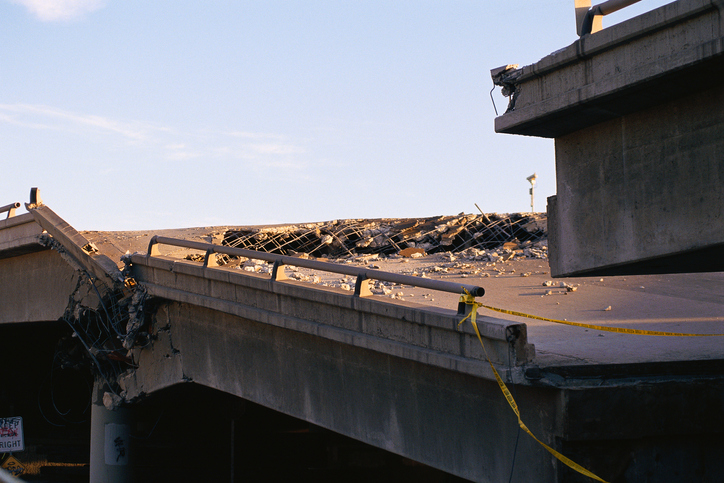How will America replace 75,000 deficient bridges without passing on the cost to future generations?
by Robert Poole
Last month, the Louisiana legislature’s Joint Transportation Committee voted not to proceed with a $2.1 billion long-term public-private partnership to replace the 71-year-old Calcasieu River Bridge on I-10 in Lake Charles.
The 50-year public-private partnership (P3) would have relied on toll revenue bonds to cover more than half the project’s cost (in addition to federal and state transportation funds). However, due to concerns over tolling expressed by local residents and the state trucking organization, the committee ditched the plan by an 8-6 vote.
Left unanswered is how Louisiana will replace this aging bottleneck bridge, which does not meet Interstate standards and has only four lanes on a six-lane Interstate.
This is not just a Louisiana problem. The U.S. Department of Transportation’s 2023 National Bridge Inventory identifies 222,000 bridges needing significant repair or replacement. Among them are 75,000 bridges at or beyond their useful lives. The chief economist of the American Road & Transportation Builders Association (ARTBA) estimates the cost of addressing the most critically important of those bridges at about $300 billion.
State departments of transportation that are focusing on their share of these deficient bridges are looking first to the federal government. For example, the obsolete 61-year-old Blatnik Bridge between Duluth MN and Superior WI is in dire need of replacement. Minnesota Department of Transportation (DOT) and Wisconsin DOT are working together on a replacement. With a price tag of $1.72 billion for the latestdesign, they are hoping for $1 billion from Uncle Sam (though they have each allocated $400 million for the project).
How realistic is getting half or more of the cost of a megaproject bridge from Congress?
The Infrastructure Investment and Jobs Act (IIJA) includes $10.6 billion in bridge formula funds this year and another $15.9 billion over the next three years. There is also a $10 billion Large Bridge grant program for bridges costing $100 million or more. That adds up to $36.5 billion, assuming Congress appropriates all the funds the legislation authorized. That’s about 12% of the $300 billion ARTBA estimate for the most critically important bridge replacements.
You can already guess what will be seen as essential once IIJA expires. A coalition will call for making the “one-time funding” boost from IIJA the new baseline for federal transportation funding. This assumes the next presidential administration and future Congresses continue to ignore the Congressional Budget Office’s warning about the unprecedented growth in the national debt, which, unless checked, will soon see interest payments taking up a larger share of the federal budget than national defense.
There are better ways to address the crisis of America’s aging bridges. To begin with, nearly all these bridges are owned and operated by state or local governments. The deferred maintenance and lack of responsibility for timely repair and replacement are theirs, and voters should hold them accountable. States that take responsibility for their major bridges can look to several proven models that address the huge capital expenditures for refurbishment and replacement and the ongoing need for proper stewardship. Two versions of long-term public-private partnerships offer the ability to use long-term financing for such bridges rather than relying on annual state transportation department cash flow or waiting to win a piece of the federal pie. And both build in long-term stewardship.
For an array of smaller bridges, a state DOT could use the successful Pennsylvania Rapid Bridge Replacement Project as a model. Pennsylvania refurbished 558 such bridges using a long-term design-build-finance-operate-maintain (DBFOM) public-private partnership financed based on annual availability payments from PennDOT. The winning P3 team raised the capital needed for all the bridge projects based on the state’s commitment to the annual payments. Cost overruns and late-completion risks were transferred from the state to the private entity. The P3 entity also contractually committed to 25 years of proper maintenance. None of those benefits would have existed had those projects been funded over many years by federal grants.
For megaproject bridges, the wiser solution is a toll-financed DBFOM P3, like that used for the Elizabeth River Crossing tunnels in Virginia and the rejected Calcasieu Bridge in Louisiana. Toll financing has been used nationwide for major bridges, from the George Washington Bridge in the east to the Golden Gate Bridge in the west. In this type of P3, the state may pick up 20% to 50% of the new bridge’s construction cost, while the P3 entity finances the rest and again takes on significant risks, including cost overruns and inaccurate traffic and revenue projections. It also agrees to proper annual maintenance for the life of the long-term agreement (typically 50 years or more). This model is especially suited to megaprojects, which are inherently more risky than more minor highway and bridge projects.
Former Council of Economic Advisers Chairman Herb Stein famously remarked, “If something cannot go on indefinitely, it will stop,” which became known as Stein’s Law.
Massive expansions of federal transportation programs based on funds borrowed from our grandchildren cannot go on forever. Wise legislators and state transportation departments should take this advice seriously.
Originally published by Reason Foundation. Republished with permission.
For more Budget & Tax News.
